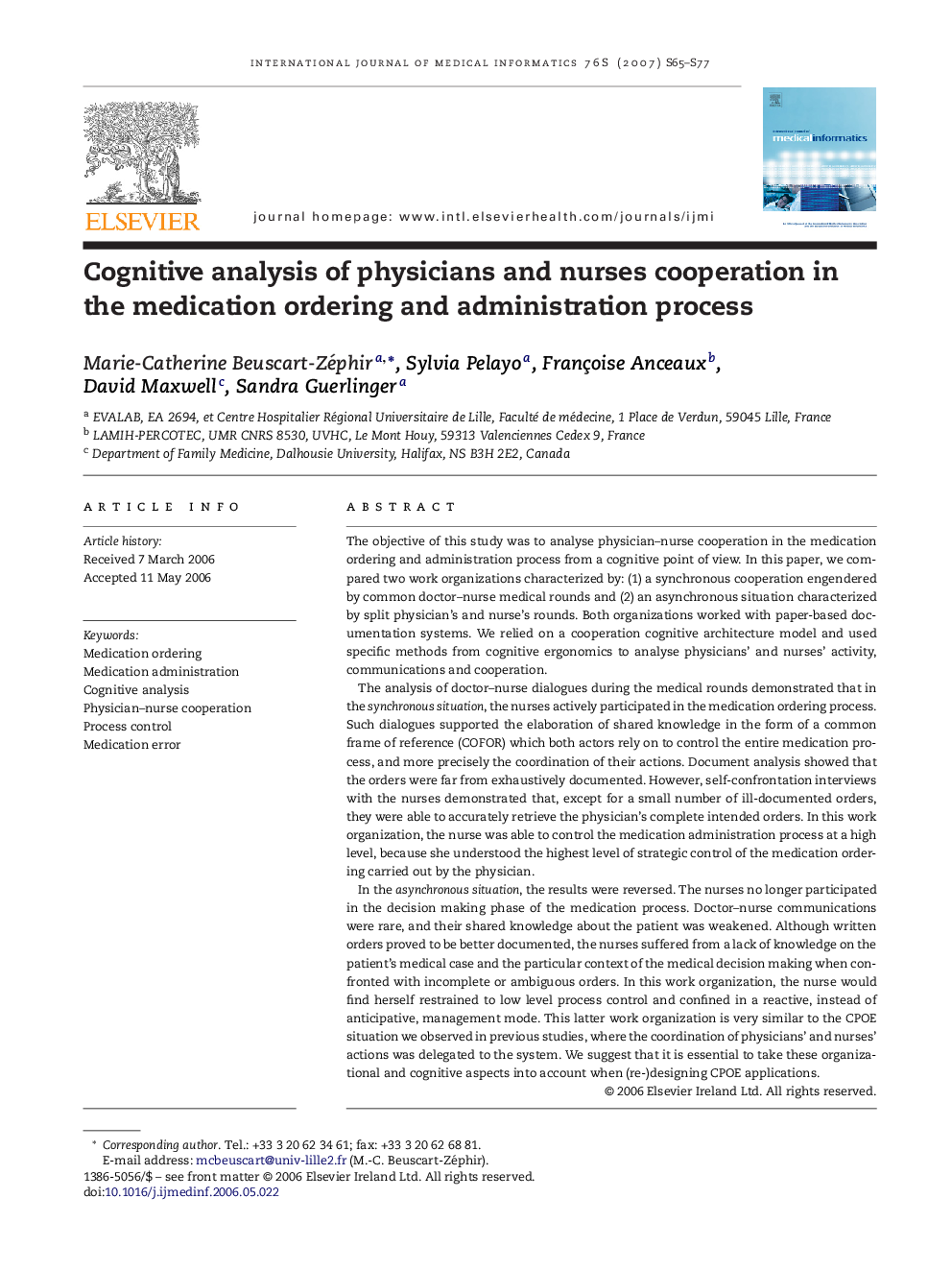| کد مقاله | کد نشریه | سال انتشار | مقاله انگلیسی | نسخه تمام متن |
|---|---|---|---|---|
| 516441 | 1449212 | 2007 | 13 صفحه PDF | دانلود رایگان |

The objective of this study was to analyse physician–nurse cooperation in the medication ordering and administration process from a cognitive point of view. In this paper, we compared two work organizations characterized by: (1) a synchronous cooperation engendered by common doctor–nurse medical rounds and (2) an asynchronous situation characterized by split physician's and nurse's rounds. Both organizations worked with paper-based documentation systems. We relied on a cooperation cognitive architecture model and used specific methods from cognitive ergonomics to analyse physicians’ and nurses’ activity, communications and cooperation.The analysis of doctor–nurse dialogues during the medical rounds demonstrated that in the synchronous situation, the nurses actively participated in the medication ordering process. Such dialogues supported the elaboration of shared knowledge in the form of a common frame of reference (COFOR) which both actors rely on to control the entire medication process, and more precisely the coordination of their actions. Document analysis showed that the orders were far from exhaustively documented. However, self-confrontation interviews with the nurses demonstrated that, except for a small number of ill-documented orders, they were able to accurately retrieve the physician's complete intended orders. In this work organization, the nurse was able to control the medication administration process at a high level, because she understood the highest level of strategic control of the medication ordering carried out by the physician.In the asynchronous situation, the results were reversed. The nurses no longer participated in the decision making phase of the medication process. Doctor–nurse communications were rare, and their shared knowledge about the patient was weakened. Although written orders proved to be better documented, the nurses suffered from a lack of knowledge on the patient's medical case and the particular context of the medical decision making when confronted with incomplete or ambiguous orders. In this work organization, the nurse would find herself restrained to low level process control and confined in a reactive, instead of anticipative, management mode. This latter work organization is very similar to the CPOE situation we observed in previous studies, where the coordination of physicians’ and nurses’ actions was delegated to the system. We suggest that it is essential to take these organizational and cognitive aspects into account when (re-)designing CPOE applications.
Journal: International Journal of Medical Informatics - Volume 76, Supplement 1, June 2007, Pages S65–S77